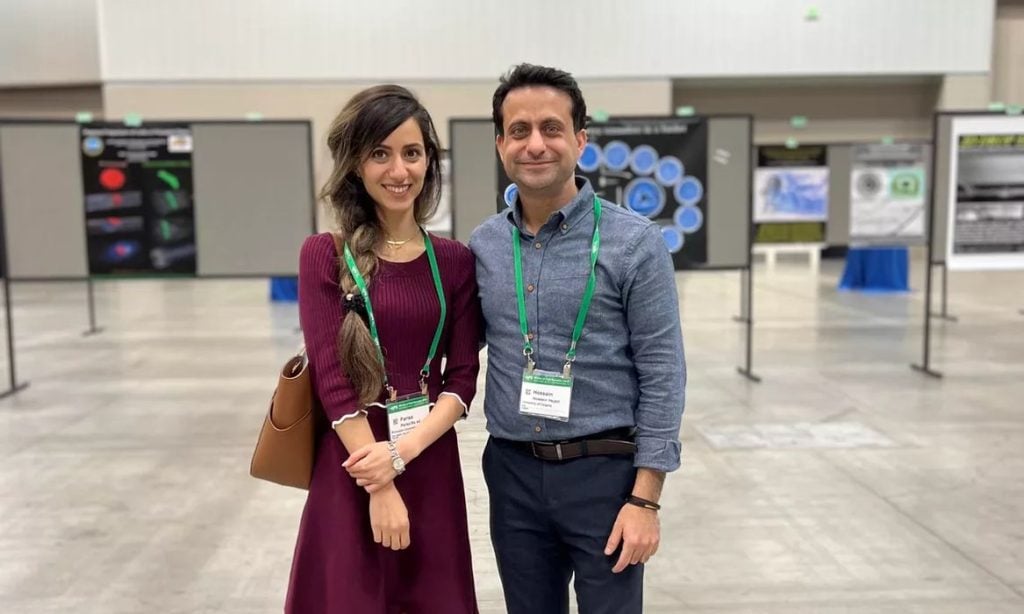Researchers at the University of Calgary have developed a ” liquid in liquid” 3D printed material. The team, including researchers Dr. Hossein Hejazi, PhD’11, and Dr. Parisa Bazazi, PhD’21, as well as Dr. Howard Stone, PhD, of Princeton University, used a number of liquids in hopes of finding the right combination to create spongy materials.
Traditionally, the techniques used are limited to drop-by-drop printing and face limitations in building structured materials.
Hejazi says he and his colleagues added nanoparticles to water and chemical compounds, or surfactants molecules, to oil.
“By injecting this water into the oil, the interface between the oil and water spontaneously turns into emulsion, forming an interfacial skin made of many tiny water droplets that are sticking together,” says the chemical and petroleum engineering professor.
Essentially, we form 3D tube-like structures in oil, which we demonstrate enables new opportunities in 3D printing.
Bazazi says it’s a simple approach as the skin is flexible and regenerates when damaged.
“The tube-like printed features have a spongy texture resembling miniaturized versions of tube sponges found in oceans,” she says. “Our analysis shows that stable liquid filaments of silica are formed when emulsions are generated and remain at the interface during the printing period.”
Keeping it simple
Hejazi believes the team’s approach to all-liquid 3D printing will open a new avenue for a wide range of applications.
A second article on the fundamental aspect of the same work has already been published in the prestigious Physical Review Letters, entitled Dynamics of droplet pinch-off at emulsified oil-water interfaces: Interplay between interfacial viscoelasticity and capillary forces.
“Liquid-in-liquid printed materials have many potential uses in energy storage, microreactors, and for creating biomimetic materials like tissues and polymers,” he says.
While it sounds like extraordinarily tedious work, Hejazi says their approach will actually be quite easy and efficient.
“All printed structures in our work are handwritten and only contain water, mineral oil, silica nanoparticles and an oil-soluble surfactant, indicating that the printing process is simple, non-invasive and can be accomplished in any laboratory without the need of external forces, sophisticated equipment, or special types of adhesive materials,” he says.
Hejazi, who leads the Interfacial Flows and Porous Media laboratory at the University of Calgary, hopes to continue building on these research findings with his work in energy production and transition.
Find out more about the University of Calgary at ucalgary.ca.
Subscribe to our Newsletter
3DPresso is a weekly newsletter that links to the most exciting global stories from the 3D printing and additive manufacturing industry.






















